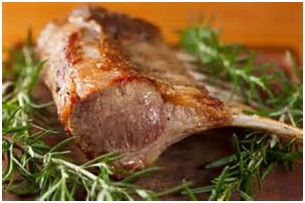
A Bad Rap
Lamb (and mutton), a red meat, has always gotten a bad rap for many reasons. One reason is that it is often believed that white meat is healthier. Today, red meat is much leaner than it was thirty years ago because of new breeding technologies, improved production strategies, and better meat processing techniques. Unsaturated fat, which is good for you, makes up for half the fat in lamb. Palmitoleic acid, a 16-carbon monounsaturated fatty acid found in lamb, possesses strong antimicrobial properties.
High in Nutrients
Lamb also has a high nutritional value and is an especially good source of easily absorbed zinc and iron. The recommended daily allowance provided by a three ounce serving of cooked lamb is 30% for zinc (essential for growth, tissue repair, and a healthy immune system) and 17% for iron (needed for the formation of red blood cells). Lamb is rich in B vitamins, especially B12. One serving can provide 74-100% of the daily requirement for Vitamin B12, which is essential for the body’s metabolic reactions. Lamb is also nature’s best source for an amino acid called carnitine, which is needed to generate energy from fatty acids. Trace elements such as copper, manganese, and selenium are also found in this meat, and it contains a rich supply of high quality protein.
Lamb is a food you can feel good about eating because today’s lamb is low in fat and an excellent source of vitamins and minerals.


